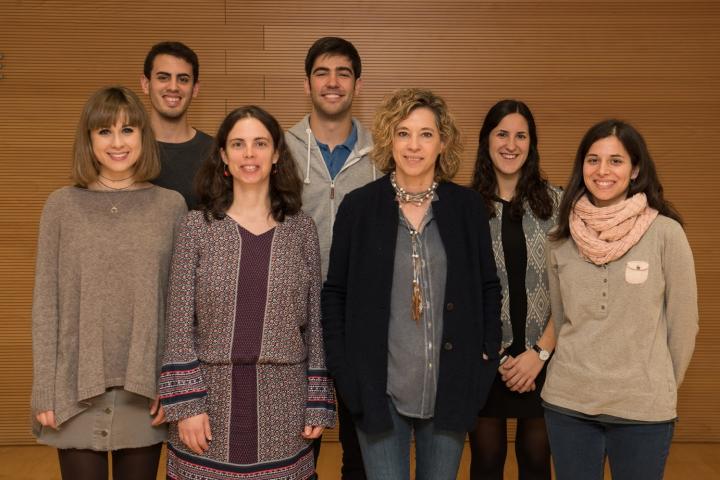Improvement of motor coordination in mice

Credit: UNIVERSITY OF BARCELONA (UB)
Researchers from the Institute of Neurosciences of the University of Barcelona (UBNeuro) and the August Pi i Sunyer Biomedical Research Institute (IDIBAPS) described a mechanism, the increase of proteinaceous synthesis, which takes part in the degeneration of the type of neurons that are affected in Huntington’s disease, a genetic neurodegenerative disease. These results, published in the science Brain, could help researchers design new therapies to treat this and other brain-affecting diseases.
The study is led by Esther Pérez-Navarro, lecturer at the Faculty of Medicine and Health Sciences of the UB and researcher at the August Pi i Sunyer Biomedical Research Institute (IDIBAPS). Other researchers from the University Pablo de Olavide have taken part in the study too.
Huntington’s disease is a genetic neurodegenerative disease caused by the mutation of the huntingtin gene, which causes the early loss of striatal projection neurons, with effects in the motor coordination and cognitive and psychiatric damage. The new study analysed the role in this proteinaceous synthesis altering process, a mechanism that allows neurons read the genetic code to synthetize proteins.
Improvement of motor coordination in mice
In order to study this mechanism, researchers analysed the total and phosphorylate levels of 4E-BP1, a protein that inhibits proteinaceous synthesis, in mice models with the disease. “The results show the total levels of the protein are reduced, while the phosphorylate levels increase, in striatal projection neurons in mice with the disease, compared to control mice, so the protein synthesis increases, as seen in samples from patients’ brains”, notes Esther Pérez-Navarro, also researcher at the Biomedical Research Networking Center on Neurodegenerative Diseases (CIBERNED).
To confirm this relation between inappropriate activity of proteinaceous synthesis and the disease, researchers blocked this mechanism pharmacologically and observed the motor function improved in mice and that different molecular values were recovered in normal levels in the brains. “These results show an increase in the proteinaceous synthesis in the Huntington’s disease is damaging and therefore, it represents a potential therapeutic target for new treatments such as a drug that can be administrated in a non-invasive manner to normalize proteinaceous synthesis”, noted the researcher.
A common mechanism in other brain diseases
Although this is the first time the proteinaceous synthesis alteration is related to this disease, this is a mechanism that was described in other neurodegenerative diseases (such as Alzheimer’s and Parkinson’s) and other mental disorders such as autism. “Finding common mechanisms in different diseases affecting the brain makes it more attractive, since the same therapy could benefit different diseases”, says the researcher.
Biomarker search
This research study opens the door to identifying biomarkers that can help detect the disease before the first symptoms appear. In this sense, the researchers, in collaboration with the Unit of Movement Disorders in Hospital de la Santa Creu i Sant Pau, are studying whether the proteinaceous synthesis is also altered in outside brain cells, such as blood cells and fibroblasts (skin cells). “The advantage of this study being conducted in Huntington’s, associated with a genetic mutation, is that we can analyse these changes in carriers who do not show symptoms and we can make a long-term monitoring”, concludes the researcher.
###
Media Contact
Rosa Martínez
[email protected]
0034-934-035-544
Original Source
https:/
Related Journal Article
http://dx.




